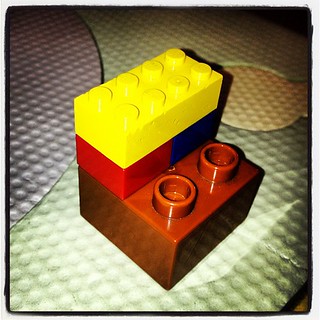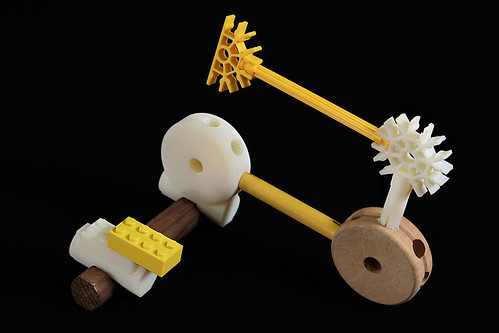To make an analogy, let's look at DUPLO and System LEGO. DUPLO are the larger blocks built for young children (my almost-2-year-old loves to chew on these). System bricks are what you probably think of as LEGO. You may not have realized it, but these two types of pieces can be combined:

Some LEGO builders use this trick when making large creations. DUPLO bricks are larger, and can quickly build up big mountains or whatever, but System bricks can be used to make the final result much more detailed. Here we see this principle in a WIP of a train display.

Now, this isn't so hard, since DUPLO and System bricks are both by LEGO, and they designed these to integrate. But QM/MM is a different matter. The theories underlying them are completely unrelated, and the real difficulty that faced Karplus, Levitt and Warshel (and others) and the reason they were recognized by the Nobel committee, was how to develop tools that connected them together in a meaningful way. A couple of years ago, Golan Levin and Shawn Sims came up with a series of connection pieces that can link LEGO, Lincoln Logs, TinkerToys, and other building toys. They don't sell them, but they made the designs available so you can make your own with a 3D printer.

With these you can link up previously-unconnected constructions. It's QM/MM for the building toy world! Hmm, is their a Nobel for toys?

No comments:
Post a Comment